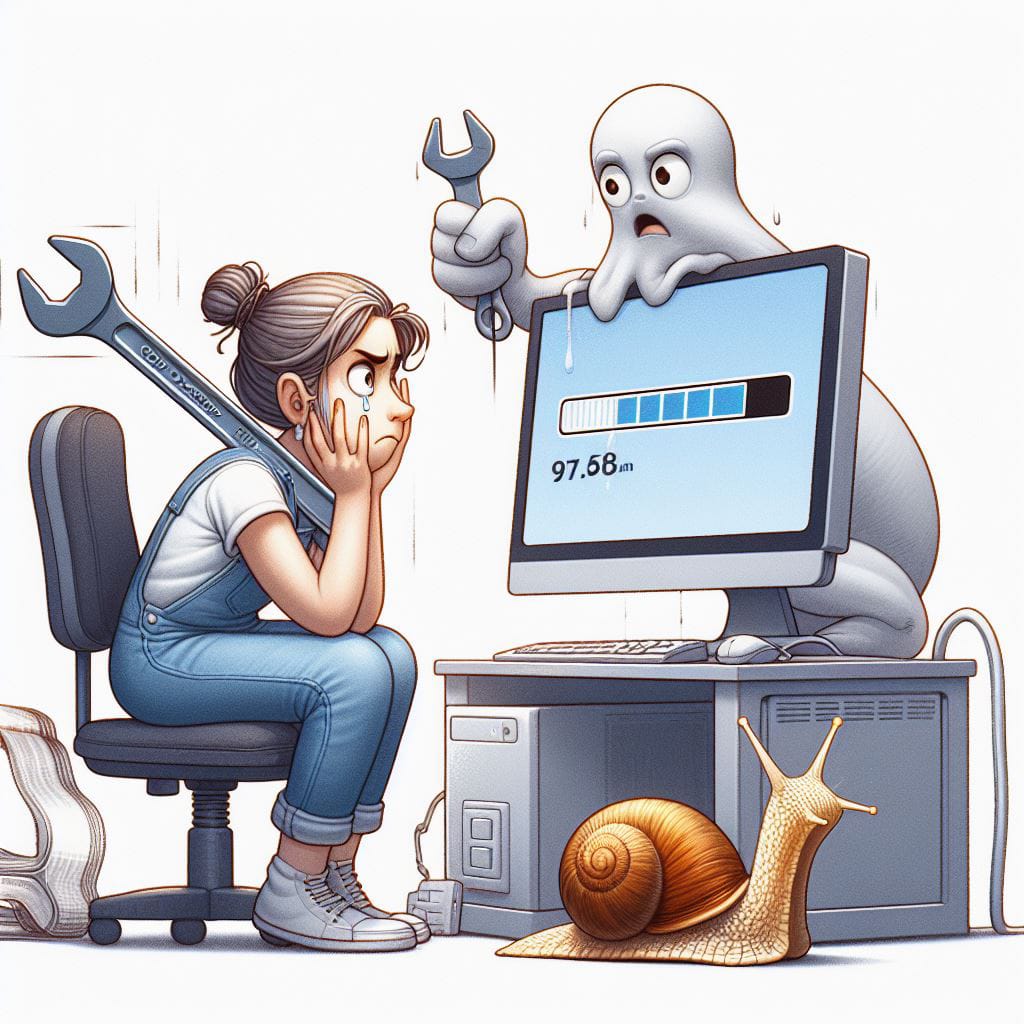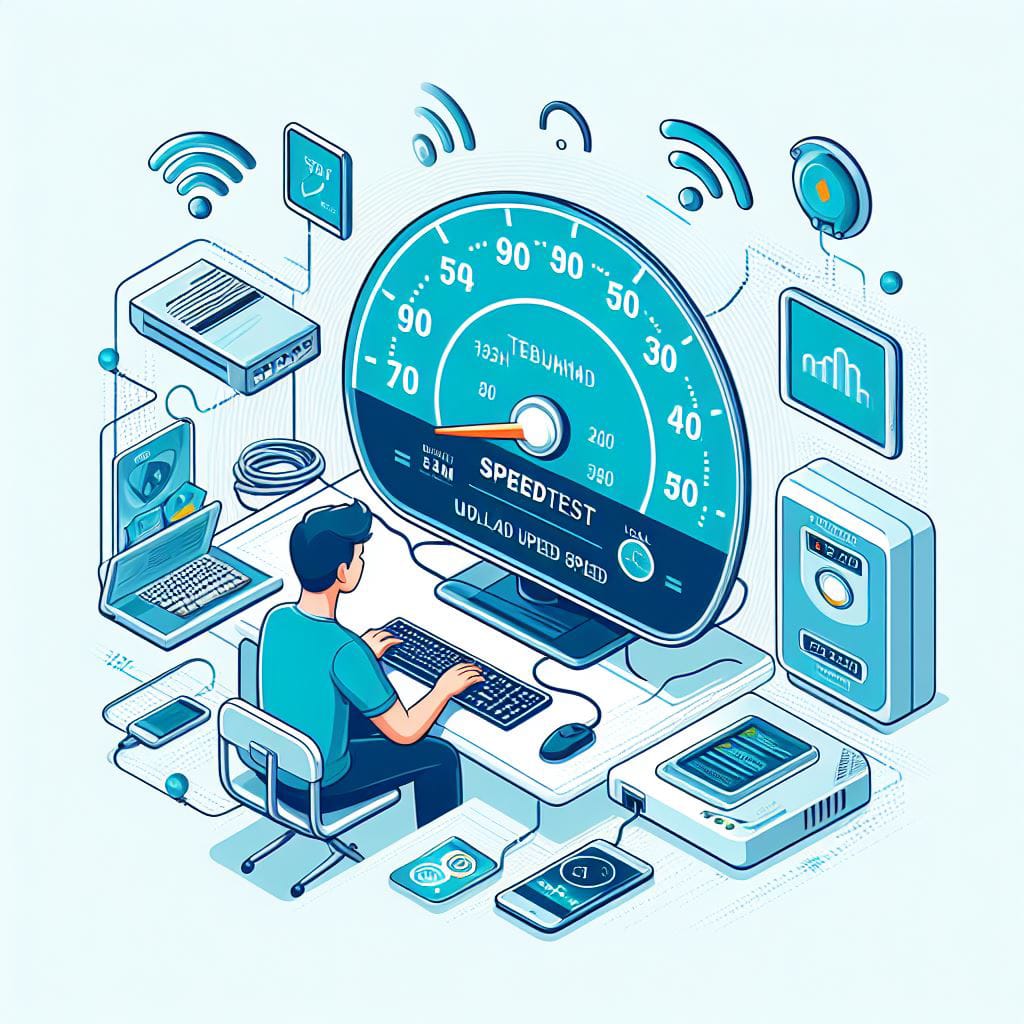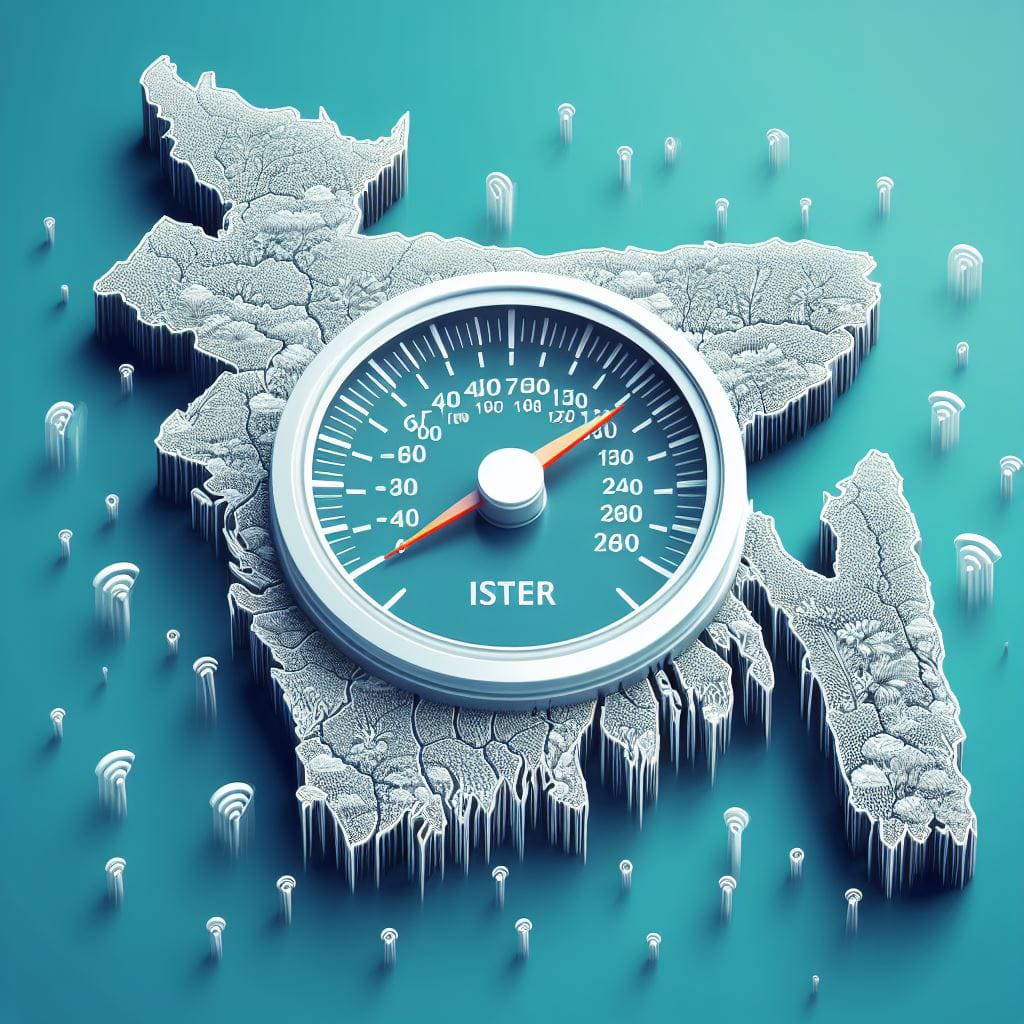In recent years, Bangladesh has witnessed a significant transformation in its broadband internet landscape, with increasing investments in infrastructure and technology leading to improved connectivity across the country. As the demand for faster internet speeds continues due to the growing number of users and digitally enabled services, it becomes essential to examine the current state of broadband speeds in Bangladesh.

What Is the Average Broadband Speed in Bangladesh?
The average broadband speed in Bangladesh has seen a steady increase over the past few years. According to the latest data from Ookla’s Speedtest Global Index, as of the most recent update, the average mobile download speed in Bangladesh is around 17.65 Mbps, while the average fixed broadband speed is approximately 38.97 Mbps. These figures represent a considerable improvement from previous years, reflecting ongoing enhancements in the network capabilities of local ISPs.
Factors Influencing Broadband Speed
Several factors contribute to the broadband speed that users experience in Bangladesh:
- Infrastructure: The backbone of internet speed lies in the physical and technical infrastructure deployed by ISPs. This includes the type of connectivity (e.g., fiber, DSL, cable) and the geographical reach of service providers.
- Regulation and Policy: Government policies and regulations play a crucial role in shaping the broadband market. Policies that encourage competition and investment in newer technologies can lead to better services and improved speeds.
- User Density: The number of users sharing a network significantly impacts speeds. During peak times, users might experience slower speeds due to higher traffic on the network.
- Technological Advances: Adoption of newer technologies like Fiber to the Home (FTTH) significantly boosts speed and reliability of broadband services.
Challenges and Opportunities
While the growth in broadband speeds is promising, there remain challenges that need addressing to further boost the performance and reliability of internet services:
- Rural Connectivity: Ensuring that remote and rural areas have access to high-speed internet remains a challenge. Bridging this digital divide is crucial for equitable development.
- Quality of Service: Consistency in service quality, especially in terms of speed and uptime, varies significantly across different regions and providers.
- Investment in Infrastructure: Continued investment in advanced networking technologies is necessary to keep up with the increasing demand and to support newer services like cloud computing and Internet of Things (IoT).

How to Check Your Broadband Internet Speed
Checking your broadband internet speed is a straightforward process that can help you ensure you’re getting the service you pay for. Regular speed tests can also help you troubleshoot any connectivity issues you might be experiencing. Here’s a simple guide on how to check your broadband internet speed:
Step 1: Choose a Reliable Speed Test Tool
There are several reputable online speed test tools available. Some of the most commonly used ones include:
- Speedtest by Ookla: This is one of the most popular and widely trusted speed test services. It provides detailed information about your internet connection’s download and upload speeds as well as ping times.
- Fast.com: Developed by Netflix, Fast.com is a simple and quick tool that primarily measures your download speed, which is crucial for streaming services.
- Google Speed Test: Accessed directly through Google search, this tool offers an easy and convenient way to test your internet speed without navigating away from your search page.
Step 2: Prepare for The Test
To get the most accurate results from your speed test, follow these tips before you begin:
- Connect Directly to Your Router: If possible, use a wired connection (Ethernet) to connect directly to your router. This eliminates variables that can affect your speed, such as Wi-Fi signal loss.
- Close Unnecessary Applications: Ensure that no other devices or applications are using your internet connection while you perform the speed test. This includes turning off streaming services, pausing downloads, and closing apps that use internet in the background.
- Choose the Right Time: Conducting the test during off-peak hours can prevent the results from being skewed by network congestion.
Step 3: Run the Test
Once you’ve selected a tool and prepared your setup, you’re ready to run the test:
- Go to the website of the speed test tool of your choice.
- Hit the ‘Go’ or ‘Start’ button on the site to commence the speed test.
- Wait for the tool to complete the assessment. It usually takes a few seconds to a minute.
Step 4: Interpret the Results
After the test completes, you’ll see several metrics displayed:
- Download Speed: The speed at which your internet connection can download data from the internet. It’s measured in Mbps (megabits per second).
- Upload Speed: The speed at which your internet connection can upload data to the internet. This is also measured in Mbps.
- Ping (Latency): The reaction time of your connection—how quickly you get a response after you’ve sent out a request. It’s measured in milliseconds (ms).
Step 5: Compare and Conclude
Compare the results to the speeds promised by your ISP. If your results are consistently lower than expected, consider troubleshooting further or contacting your ISP for support. Multiple tests at different times of the day can provide a comprehensive overview of your connection’s performance.
By regularly checking your broadband speed, you can manage your internet service effectively and ensure you are getting the performance for which you are paying.
How to Speed Up Your Broadband Connection
If you’re experiencing slow broadband speeds, there are several steps you can take to improve your internet connection. Here’s a practical guide to enhancing your broadband speed:

1. Optimize Your Router Placement
The location of your router can significantly impact the quality of your broadband connection, especially if you connect via Wi-Fi:
- Centralize the Router: Place your router in a central location in your home to ensure an even distribution of the Wi-Fi signal.
- Elevate the Router: Keep the router elevated on a shelf or a table to improve signal distribution.
- Keep It Clear: Avoid obstructions and keep the router away from metal objects and appliances that emit electromagnetic waves.
2. Secure Your Wi-Fi Network
Unauthorized access to your Wi-Fi network can slow down your internet speed. Ensure your network is secured:
- Change Default Passwords: Update the default username and password on your router to something more secure.
- Use WPA3 Security: Ensure your router is set to use WPA3 security, the latest Wi-Fi Protected Access protocol that provides enhanced security.
3. Update Your Router Firmware
Manufacturers often release firmware updates for routers which can improve performance and security:
- Check for Updates: Visit the manufacturer’s website to check for the latest firmware updates for your model and follow the instructions to update.
4. Limit Bandwidth-Heavy Applications
Some applications can consume more bandwidth than others, particularly streaming services, video calls, and large file downloads:
- Prioritize Bandwidth: Use your router’s Quality of Service (QoS) settings to prioritize traffic from essential applications.
- Schedule Downloads: Schedule large downloads for off-peak times when other devices are not competing for bandwidth.
5. Reduce the Number of Connected Devices
Each device connected to your network consumes bandwidth. Reducing the number of devices connected can improve speed:
- Disconnect Unused Devices: Regularly review and disconnect devices that aren’t in use.
6. Upgrade Your Plan or ISP
If you’ve tried all the above and still experience slow speeds, it might be time to consider other options:
- Higher Speed Plan: Consider upgrading to a higher speed plan if your current plan does not meet your needs.
- Switch ISPs: If other providers offer better speeds or more reliable service in your area, consider switching.
7. Use Wired Connections
Whenever possible, use wired connections to connect devices directly to your router:
- Ethernet Over Wi-Fi: Connecting devices via Ethernet cables can provide faster and more reliable internet connections than Wi-Fi.
8. Clear Your Internal Wiring
Old or poorly configured internal wiring can also impact your broadband speed:
- Check for Interference: Ensure that your router and other devices are not interfered with by other household wiring.
- Consider a Technician: If unsure, you may need a technician to check that your internal wiring is up to date and properly configured.
Implementing these steps can significantly enhance your broadband experience by increasing speed and improving connection stability. Regularly monitoring your network and adjusting your setup can ensure that you always have the best possible internet performance.
Conclusion
The average broadband speed in Bangladesh is on an upward trajectory, which is a positive sign for consumers and businesses alike. As the country continues to advance its digital infrastructure, it is expected that both the coverage and quality of broadband services will improve, thereby supporting Bangladesh’s ambitions to become a more connected and digitally proficient nation. By addressing current challenges and leveraging opportunities, Bangladesh can ensure that its broadband infrastructure meets the needs of its growing digital economy.

